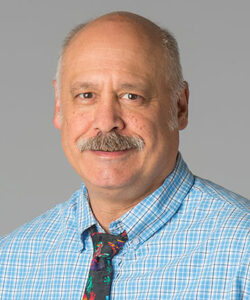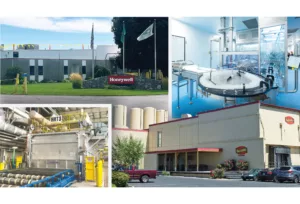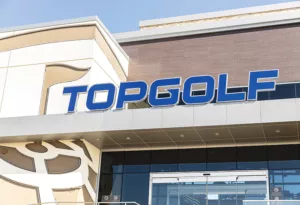Geothermal gains share in custom home market
Alternative costs more to install, less to operate
Geothermal heating and cooling systems are gaining acceptance in residential construction here, although most adopters of the heat-transfer technology are in the upscale custom home market.
Jeff Fountain, a principal at Copeland Architecture & Construction Inc., a Spokane designer and builder of custom homes, says about a fourth of the company’s customers are interested in geothermal systems.
“It’s a real good way to lower monthly costs,” Fountain says, although he adds that upfront costs are higher than for conventional gas and electric systems.
Geothermal systems employ a basic heat-exchange technology that’s loosely similar to conventional air-conditioning technology. Geothermal systems, however, usually are reversible, meaning they can heat as well as cool.
When in the cooling mode, a residential geothermal system uses a ground-source heat pump to pull heat out of a home and radiates it through an underground coil system, similar in concept to the above-ground coil system in an enclosed unit. The coil component in a geothermal system consists of several hundred feet of tubing or pipe that’s looped at least six feet underground, where ambient temperatures are constant.
When a geothermal system is in the heating mode, the process is reversed and the ground-source heat pump draws heat from the ground and transfers it to the residence.
Geothermal systems exchange heat using a small amount of energy, while conventional natural gas systems produce heat by burning fuel in a furnace or boiler. Because of geothermal’s low fuel consumption, some customers are just as interested in using geothermal technology to reduce their carbon footprint as they are in reducing energy costs, Fountain says.
“A few things about sustainability have significant upfront costs and longer return on investment,” he says. “People buying custom homes tend to live in them longer than average, so they have a better chance of reaping the rewards.”
Soil types and other site conditions also factor into the efficiency and viability of a geothermal project, he says.
“If you have a big meadow with good grasses and easy soils, you’re only talking about $3,000 to $5,000 for trenches for pipes,” Fountain says, “If you start getting into rock or really nasty clay, you end up spending more money digging trenches to get the same linear footage of tubing.”
Geothermal systems also require a certain amount of open space, he says, adding that a typical system would have five 300-foot loops that would need to be spaced six to eight feet apart.
“If the pipes in a looped system are too close together, the system interferes with itself,” Fountain says. “In the city, it’s difficult to get enough linear footage; go to a rural or semi-rural site with a little bit of acreage and it’s an option.”
Jason Bartel, owner of Northwest Geothermal LLC, of Hayden, Idaho, says some geothermal projects, especially involving commercial properties, use vertical loops, which require well drilling, when they don’t have access to open acreage.
In a recent project, Northwest Geothermal designed and installed geothermal systems for the 70-unit Milltown Apartments affordable housing complex in Sandpoint.
That project involved drilling 70 300-foot wells in which vertical loop arrays were installed.
Costs vary for each project, Bartel says, but under ideal soil and acreage conditions, it would cost about $30,000 to install a geothermal system with a horizontal ground loop to serve a 3,000-square-foot house.
Bartel, who currently has no other employees, started Northwest Geothermal in 2009. The company’s market area includes Eastern Washington, North Idaho, and northwest Montana.
“Work has almost doubled every year for my company as people are getting more aware of alternative systems,” he says.
Terry Simioni, president of Simioni’s Warm Floors Inc., of Post Falls, also says geothermal systems are becoming more commonly requested in new custom homes.
Savings in heating and cooling costs depend on the size of the home. In a typical new home, savings can be 60 percent, compared with natural gas, and in a larger home, savings can be 80 percent, Simioni says.
The savings in operating costs are even greater if compared to electric or propane heating, he claims.
With the current federal tax incentive, such systems can pay for themselves in five to eight years, Simioni claims.
“It depends on the efficiency of the house,” he says. “Every system has its own personality.”
The tax incentive, which runs through 2016, provides federal income tax credits of 30 percent of the cost of geothermal equipment and installation, according to the federal government-backed Energy Star website. Energy Star is a program of the U.S. Environmental Protection Agency and the U.S. Department of Energy that provides rating and labeling systems to identify certain products that save energy.
While costs for geothermal systems are decreasing as technology improves and they gain in popularity, Simioni says that for the most part they are still out of the budget for an average house on a city block.
His geothermal business, though, has been increasing since the recession, with a 2013 year-over-year revenue increase of 10 percent, Simioni says.
“Each year is getting a little better,” he says.
Simioni started Simioni’s Warm Floors in 2004, specializing in floor-mounted radiant heating systems. He added the geothermal component to the business in 2007.
The small family-run business currently has one two-person installation crew, he says, adding that he hopes to hire a second two-person crew this year.
While most of the business involves large custom homes, Simioni says geothermal systems can be retrofitted for existing homes. “When we do home shows, we get requests for bids to change homes to geothermal systems, but it’s not our larger market,” he says.
He says Simioni’s Warm Floors handles jobs throughout the Inland Northwest.
Related Articles
Related Products


_c.webp?t=1763626051)

_web.webp?t=1764835652)
